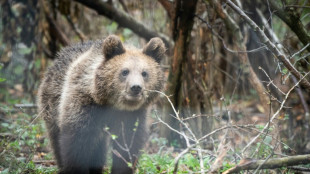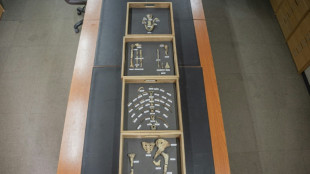

Dolphins flash friendly grins when they're ready to play
"Smile and the whole world smiles with you," goes the expression -- and it seems the same is true for bottlenose dolphins.
The brainy marine mammals use friendly facial signals to signal non-hostile intent to playmates, who respond in kind, a study in the journal iScience said Wednesday -- similar to visual cues used by humans.
Senior author and evolutionary biologist Elisabetta Palagi of the University of Pisa told AFP that she and her colleagues stumbled upon this finding "by chance."
While observing dolphin play behavior, they noticed the dolphins would start play sessions by opening their mouths in front of each other without any biting.
Intrigued, Palagi and co-author Livio Favaro of the University of Turin decided to investigate further.
They knew that it's important for dolphins to prevent play -- which can include acrobatics, playing with toys, chasing and tail slapping -- from escalating into real fighting.
A variety of animals, including primates and bears, have been observed offering open-mouth gestures as a visual sign of playfulness. However, it was unclear if dolphins did the same.
To find out, Palagi and her team recorded captive bottlenose dolphins while they played in pairs and interacted freely with human trainers at facilities in Italy and France.
Across hundreds of play sessions stretching over months, they found dolphins frequently showed their toothy grins when playing with other dolphins. They did so a little bit with humans and almost never when alone.
Dolphins were also far more likely to assume this expression when in each other's field of view, and aggressive behaviors like jaw slapping and violent head motions were never associated with the friendly open-mouth gesture.
- Hyenas, meerkats, dogs and humans -
In humans, when one person initiates a smile or laughter, another person who feels positively about them reciprocates the gesture within a second -- something understood as outside voluntary control and a sign that the emotions are genuinely shared.
"The same has been found in primates -- great apes and monkeys -- but also social carnivores such as hyenas, meerkats, dogs," said Palagi. "And the dolphins did the same."
Indeed, the likelihood of a dolphin mimicking another's open-mouth expression within one second was 13 times higher when the receiver observed the initial gesture, ruling out the possibility of this behavior occurring by chance.
Palagi predicted the findings might be controversial within the wider scientific community, as the primary way dolphins communicate is through whistles, trills and other vocalizations.
But co-author Favaro suggested there could be a good reason for dolphins to switch to visual signals in certain situations.
"Dolphins have developed one of the most intricate vocal systems in the animal world, but sound can also expose them to predators or eavesdroppers," he said in a statement.
"When dolphins play together, a mix of whistling and visual cues helps them cooperate and achieve goals, a strategy particularly useful during social play when they're less on guard for predators."
Th.Frei--HHA



